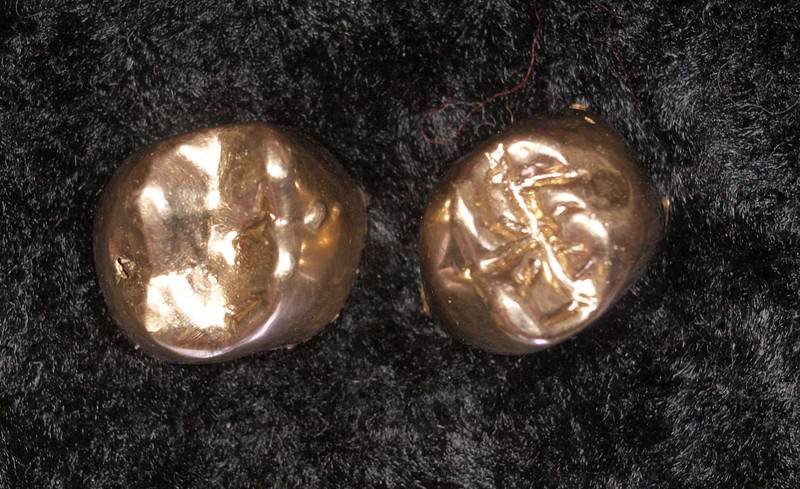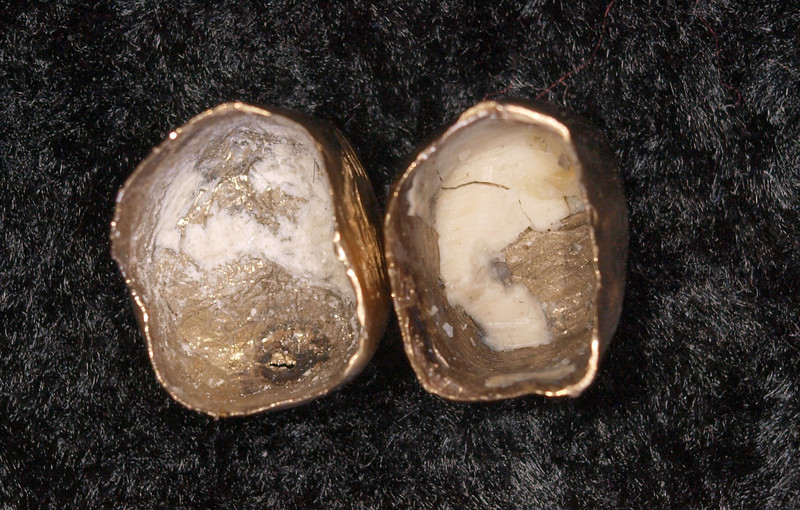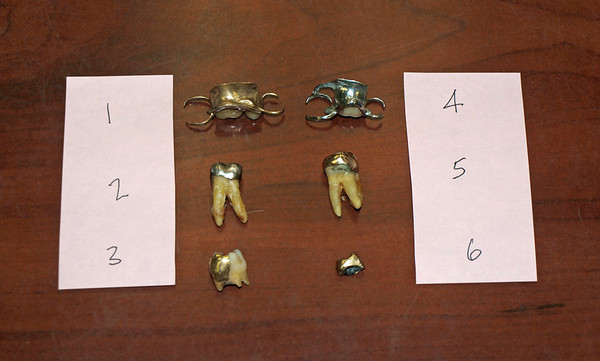Lobby
Well-known member
Refining dental gold is appealing to me, as it contains platinum group metals in addition to gold. Or said another way, selling dental gold to a refiner is distasteful to me, as I'm giving away PGM's. :mrgreen:
Yet the issue of amalgams containing mercury concern me. From Wiki "... consists of mercury (50%), silver (~22-32% ), tin (~14%), copper (~8%), and other trace metals."
Here's some dental I've got:


Neither of these, I assume, contain amalgam. Correct? By the way, should I incinerate to remove the white material?
I've purchased in the past dental which contains a hard, silvery metal in the inside. That's probably amalgam? The gold part is only the thin plate which is formed around the tooth, correct?
Yet the issue of amalgams containing mercury concern me. From Wiki "... consists of mercury (50%), silver (~22-32% ), tin (~14%), copper (~8%), and other trace metals."
Here's some dental I've got:


Neither of these, I assume, contain amalgam. Correct? By the way, should I incinerate to remove the white material?
I've purchased in the past dental which contains a hard, silvery metal in the inside. That's probably amalgam? The gold part is only the thin plate which is formed around the tooth, correct?











































































